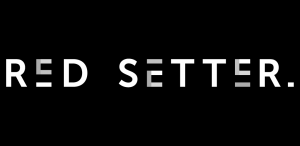A widely published journalist and book author, Alex Blyth has also helped global brands such as Deloitte, Dell, and PwC produce thought leadership reports. He now brings this experience to the design sector, helping Red Setter’s clients create thought leadership that grows both their reputations and client bases.
Main Content

Thought leadership as a tool for agency growth
Thought leadership is one of the most effective ways for creative agencies to differentiate themselves from their competitors and gain the attention of potential clients. You may have outstanding creative and client-facing talent, but so do your competitors. You may have worked hard to carve out a niche and can evidence it with strong case studies, but so can your competitors. In today’s ultra-competitive agency market, neither will provide genuine stand-out – increasingly it is only thought leadership that will do that.
A DBA Design Effectiveness Award win is the perfect catalyst for a thought leadership campaign. It provides an opportunity to look more closely at the project and draw out what your agency did that merited the award. The award adds credibility to the thought leadership piece, indicating to the reader that this project and this agency have something objectively worthwhile to say.
The best thought leadership taps into issues faced by clients and so gets their attention. It showcases the agency’s work, expertise and capacity for original thinking. It raises awareness of an agency and establishes them in people’s minds as experts, as a go-to-agency. This is why there is so much of it out there. It is why, according to eMarketer, organisations are now spending more than $100 billion annually on thought leadership. It fills pages and pages of agency websites, industry publications, and social media feeds.
Thought followership
 Despite the volume of thought leadership that is created, not all of it delivers as it should do. A recent survey by Thoughtworks360 found that less than a third of organisations who invest in thought leadership successfully generate leads and close business from it.
Despite the volume of thought leadership that is created, not all of it delivers as it should do. A recent survey by Thoughtworks360 found that less than a third of organisations who invest in thought leadership successfully generate leads and close business from it.
This is not because thought leadership does not work. Done well, it can be highly effective, but it must be done well. Much of what presents itself as thought leadership is uninspired, “me-too” thinking. It is bland “content” that fills space but offers little genuine insight, much less leadership. In doing so it can do more harm than good to an agency’s reputation.
Why does this happen? After all, this is the creative industry. Day in, day out we conceive and implement brilliant ideas that transform clients’ businesses – thought leadership ought to be second nature to us. To some extent the issue is that agencies are so devoted to client delivery that we lack time and attention for our own self-promotion.
Conception, creation, distribution
Yet the issue is about more than mere lack of resource; it is also about skills. There is a subtle but critical difference between creating thought leadership for clients, and creating it for ourselves. Whilst we are typically experts in our clients’ businesses and issues, we tend to lack the broader industry perspective required to conceive the right topics. It also requires production skills – typically editorial writing – that we lack. Whilst we may be accomplished at crafting on-pack copy or compelling ad copy we tend to lack the editorial writing skills that are needed for thought leadership. Finally, B2B content distribution is a skill little in demand at most creative agencies, but is essential if any potential clients are going to see our carefully conceived and crafted thought leadership.
Many agencies choose to bring in experts to help them conceive, create and distribute thought leadership. Yet, it can be done in-house. The skills can be learnt. In the latest DBA – Red Setter Guide we detail the three key stages – conception, creation, distribution – that will result in distinctive, ownable material that will contribute to your reputation as a genuine thought leader and so help grow your agency.
Agency transformation
Thought leadership is not a short cut to agency growth and it is hard work. Yet, high quality thought  leadership not only has the potential to deliver short term returns; perhaps more important is the longer-term shifts that on-going thought leadership creates in the way agencies are viewed by clients, employees, and peers, as well as by future employees and clients.
leadership not only has the potential to deliver short term returns; perhaps more important is the longer-term shifts that on-going thought leadership creates in the way agencies are viewed by clients, employees, and peers, as well as by future employees and clients.
We worked with a top-five agency which presented a fresh view of the future of the spirits market in an article in a drinks industry publication and then emailed it as a PDF to potential new clients. It got them in front of one of the main global drinks players, and they picked up the brief to create a more contemporary visual identity for one of the world’s most famous spirits brands.
And a thought leadership article we developed with a small regional agency, following months of researching the UK’s further education market, was used by the Times Educational Supplement as a cover story, and led to an event attended by dozens of education marketers and addressed by our client. The agency picked up significant new business as a result.
Done right, thought leadership can be powerful
 If the potential of thought leadership seems enticing, but the time required seems intimidating or inconceivable, consider instead how you can create an agency of thought leaders. The agencies that do this most successfully, do not rely on just one person. They instil a culture where everyone is involved in the ongoing conception, creation and distribution of thought leadership. The agencies that begin this process today, will be tomorrow’s industry success stories.
If the potential of thought leadership seems enticing, but the time required seems intimidating or inconceivable, consider instead how you can create an agency of thought leaders. The agencies that do this most successfully, do not rely on just one person. They instil a culture where everyone is involved in the ongoing conception, creation and distribution of thought leadership. The agencies that begin this process today, will be tomorrow’s industry success stories.
Image credits: © Rawpixelimages | Dreamstime.com
